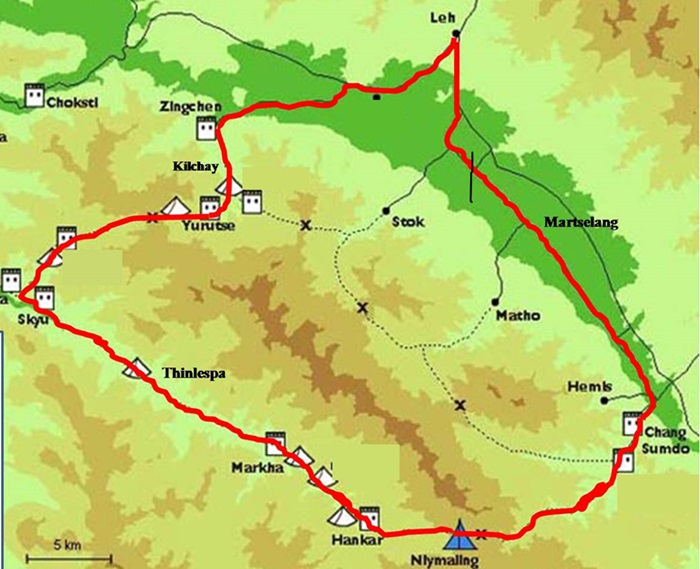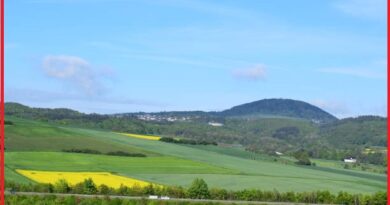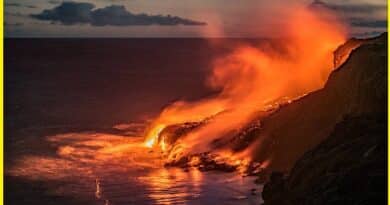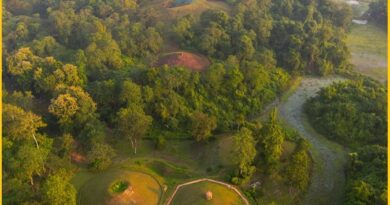Markha Valley Trekking Adventure: A Tale of Peaks and Passes
Markha Valley Trek
1. Markha Valley Trek Map
The complete guide to the adventurous river valley trek in Kashmir. Explore Markha Valley Trek, too, on our interactive map.

2. Markha Valley Trek Best Time
The best time to undertake the Markha Valley Trek is during the summer months, particularly from mid-June to mid-September. This period offers the most favorable weather conditions and clear skies, making it ideal for trekking and enjoying the stunning landscapes of Ladakh.
Weather: Ladakh experiences extreme weather conditions, with very cold winters and relatively mild summers. During the summer months, temperatures in the Markha Valley region are comfortable during the day, ranging from around 15°C to 25°C, making trekking more enjoyable. However, temperatures can drop significantly at night, so warm clothing is still necessary.
The summer season sees the opening of the high mountain passes, including the ones on the trekking route. Roads leading to the trailheads are accessible, allowing easier transportation to and from the starting point of the trek. The summer months in Ladakh are characterized by minimal precipitation, with little to no rainfall. This means that trekking conditions are generally dry, and there’s less risk of encountering landslides or impassable trails due to rain or snow.
Summer offers clear skies with excellent visibility, allowing trekkers to enjoy panoramic views of the surrounding Himalayan peaks and landscapes. This is particularly important for photography enthusiasts and those seeking breathtaking vistas. The warmer months are also a good time for spotting wildlife along the trekking route, including marmots, ibex, and various bird species. However, the chances of encountering wildlife might still be relatively low compared to other wildlife-rich regions.
Also Read- Himalayas Rugged Beauty: Langtang Valley Trek Adventure
3. Markha Valley Trek Route
The Markha Valley Trek is a spectacular journey through the remote and breathtaking landscapes of the Ladakh region in northern India. While there can be variations in the route depending on factors such as the duration of the trek and specific itinerary, here’s a general outline of the traditional route for the Markha Valley Trek-
Starting Point: The trek typically begins from the village of Spituk, located about 8 kilometers (5 miles) from Leh, the main town in Ladakh. Some variations of the trek may start from other nearby villages like Zingchen.
Spituk to Zingchen (3,550 meters): The first day involves trekking from Spituk to Zingchen, a small village at Hemis National Park’s entrance. This part of the trek is relatively easy and takes around 4-5 hours.
Zingchen to Yurutse (3,810 meters): From Zingchen, the trail ascends gradually, passing through beautiful landscapes and crossing the Zingchen Gorge. The day’s trek ends at Yurutse, a picturesque village surrounded by stunning mountains.
Yurutse to Skiu (3,340 meters) via Ganda La Pass (4,970 meters): This is one of the challenging days of the trek as it involves crossing the Ganda La Pass. The ascent to the pass offers panoramic views of the surrounding mountains. After crossing the pass, the trail descends to the village of Skiu, where trekkers camp for the night.
Skiu to Markha (3,870 meters): The trail from Skiu follows the Markha River, passing through several villages and beautiful landscapes. The highlight of this day is crossing the Markha River multiple times via wooden bridges. The day ends at Markha Village, one of the largest villages in the valley.
Markha to Thachungtse (4,000 meters): From Markha, the trail continues through the valley, offering stunning views of the surrounding peaks. Trekkers pass by Umlung Village before reaching Thachungtse, where they camp for the night.
Thachungtse to Nimaling (4,700 meters): This day involves ascending to Nimaling, the highest campsite on the trek. The trail gradually ascends, offering breathtaking views of the Markha Valley and its surrounding peaks.
Nimaling to Shang Sumdo (3,800 meters) via Kongmaru La Pass (5,240 meters): The final day of the trek involves crossing the Kongmaru La Pass, the highest point of the trek. From the pass, trekkers descend steeply to Shang Sumdo, where vehicles usually await to transfer trekkers back to Leh.
4. Markha Valley Trek Itinerary
Here’s a sample itinerary for the Markha Valley Trek, spanning over 7 days:
Day 1: Arrival in Leh
- Arrive in Leh, the capital of Ladakh.
- Rest and acclimatize to the high altitude (3,500 meters).
- Explore Leh town and visit local attractions such as Leh Palace, Shanti Stupa, and Leh Market.
Day 2: Leh to Zingchen (3,550 meters)
- Drive from Leh to Spituk, the starting point of the trek.
- Trek from Spituk to Zingchen, a small village at the entrance of Hemis National Park.
- Overnight camping at Zingchen.
Day 3: Zingchen to Yurutse (3,810 meters)
- Trek from Zingchen to Yurutse, passing through beautiful landscapes and crossing the Zingchen Gorge.
- Overnight camping at Yurutse.
Day 4: Yurutse to Skiu (3,340 meters) via Ganda La Pass (4,970 meters)
- Trek from Yurutse to Skiu via Ganda La Pass, one of the challenging days of the trek.
- Enjoy panoramic views from the pass and descend to Skiu village.
- Overnight camping at Skiu.
Day 5: Skiu to Markha (3,870 meters)
- Trek from Skiu to Markha, passing through picturesque villages and crossing the Markha River multiple times.
- Visit Markha Village, one of the largest villages in the valley.
- Overnight camping at Markha.
Day 6: Markha to Thachungtse (4,000 meters)
- Trek from Markha to Thachungtse, ascending gradually through the valley.
- Enjoy stunning views of the surrounding peaks along the way.
- Overnight camping at Thachungtse.
Day 7: Thachungtse to Nimaling (4,700 meters)
- Trek from Thachungtse to Nimaling, the highest campsite on the trek.
- Enjoy breathtaking views of the Markha Valley and its surrounding peaks.
- Overnight camping at Nimaling.
Day 8: Nimaling to Shang Sumdo (3,800 meters) via Kongmaru La Pass (5,240 meters) – Departure from Leh
- Trek from Nimaling to Shang Sumdo, crossing the Kongmaru La Pass, the highest point of the trek.
- Descend steeply to Shang Sumdo.
- Drive back to Leh.
- Depart from Leh or extend your stay to explore more of Ladakh.
This itinerary provides a balanced mix of trekking, sightseeing, and acclimatization, allowing trekkers to experience the highlights of the Markha Valley Trek while enjoying the stunning landscapes and cultural richness of the region.
5. Markha Valley Trek Package
Markha Valley Trek is a popular trekking destination in the Ladakh region of India. This trek offers stunning landscapes, picturesque villages, ancient monasteries, and breathtaking views of the Himalayas. While I can’t provide real-time package details, you can typically find Markha Valley Trek packages offered by various travel companies or tour operators specializing in adventure tourism in Ladakh. These packages usually include essentials like transportation, accommodation (camping or homestays in villages), meals, permits, and a guide.
When looking for a package, consider factors like the duration of the trek, level of difficulty, inclusions, quality of guides, and overall reputation of the tour operator. It’s also a good idea to check if the package includes acclimatization days to help mitigate the effects of altitude sickness, as Ladakh is at a high altitude. You can find such packages through online travel platforms, tour operator websites, or by contacting local travel agencies in the Ladakh region. Make sure to read reviews and compare packages to find the one that best suits your preferences and budget.

6. Markha Valley Trek Indiahikes
Indiahikes is a well-known trekking organization in India that offers guided treks to various destinations across the country, including the Markha Valley Trek. They provide comprehensive trekking packages that include transportation, accommodation, meals, guides, and support staff, aiming to make the trekking experience enjoyable and hassle-free for participants.
Suppose you’re interested in doing the Markha Valley Trek with Indiahikes. In that case,Indiahikes provides experienced trek leaders who are well-trained in wilderness first aid and have extensive knowledge of the trekking routes. They ensure the safety and well-being of trekkers throughout the journey.
Trekking with Indiahikes typically involves joining a group of like-minded individuals who share a passion for outdoor adventures. This can enhance the overall trekking experience by fostering camaraderie and creating memorable moments together. Indiahikes takes care of all logistics involved in the trek, including transportation to and from the trekking base, accommodation in tents or guesthouses along the trail, and nutritious meals prepared by their staff.
Safety is a top priority for Indiahikes, and they implement various measures to ensure the well-being of trekkers, such as regular health check-ups, carrying emergency medical kits, and providing guidance on altitude sickness prevention. Indiahikes promotes responsible trekking practices and encourages participants to minimize their environmental impact by following Leave No Trace principles and respecting local customs and traditions.
7. How To Reach Markha Valley Trek
The most common way to reach Leh is by air. Leh has a domestic airport, Kushok Bakula Rimpochee Airport (IXL), which is well-connected to major cities in India like Delhi, Mumbai, and Srinagar. From the airport, you can hire a taxi or use pre-arranged transportation to reach Leh town.
From Srinagar: If you’re traveling from Srinagar, you can take the road through the beautiful Srinagar-Leh Highway. This highway remains open only during the summer months (usually from May to October) due to heavy snowfall in the winter.
From Manali: Another popular route is the Manali-Leh Highway, which is known for its stunning landscapes but is accessible only during the summer months as well.
To Start the Trek- The Markha Valley Trek usually starts from a village called Spituk, which is about 8 kilometers from Leh. You can reach Spituk by hiring a taxi from Leh. Alternatively, some tour operators may arrange transportation to the starting point as part of their trekking packages.



